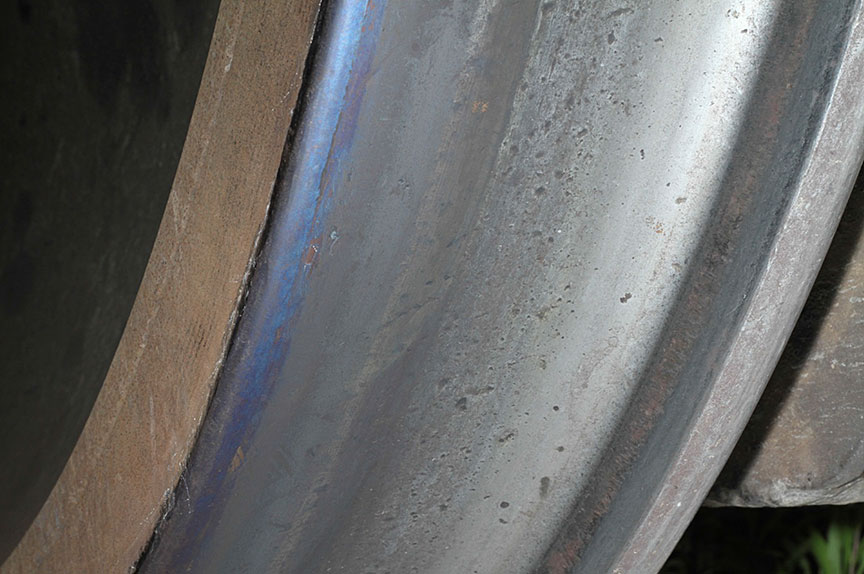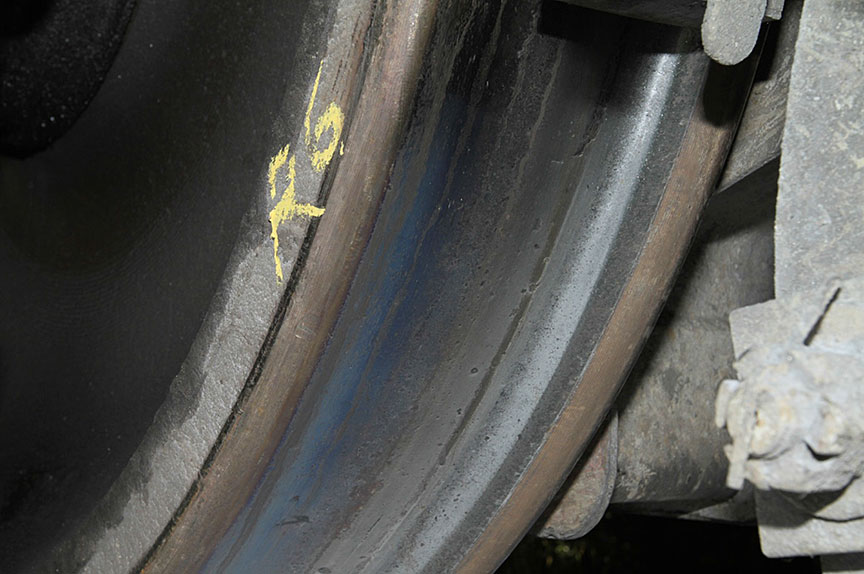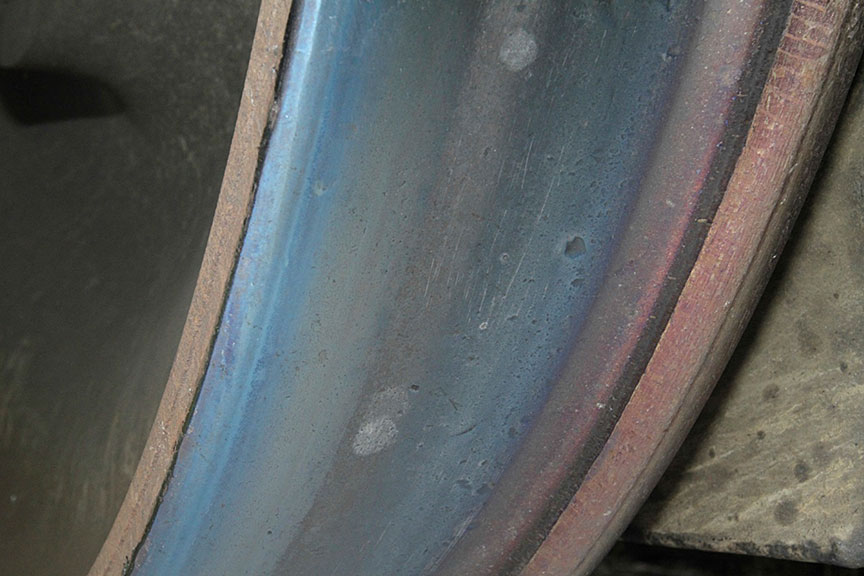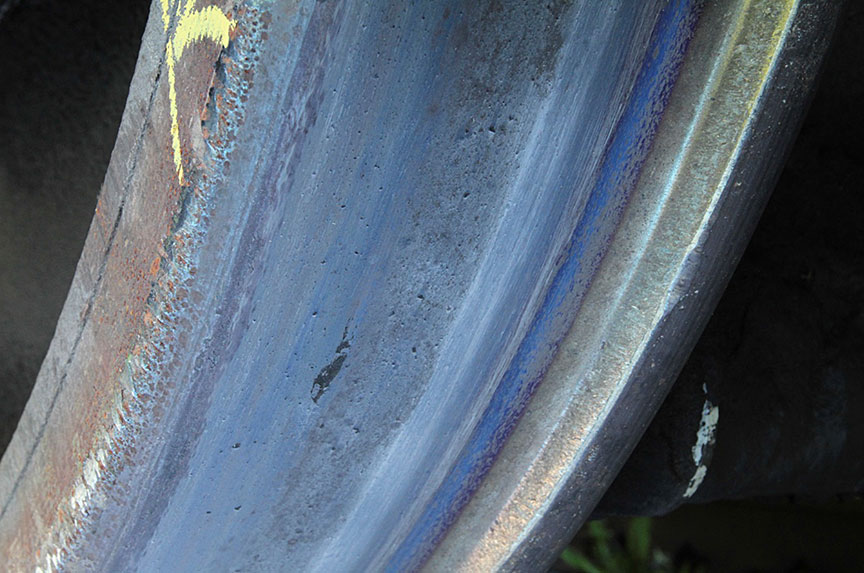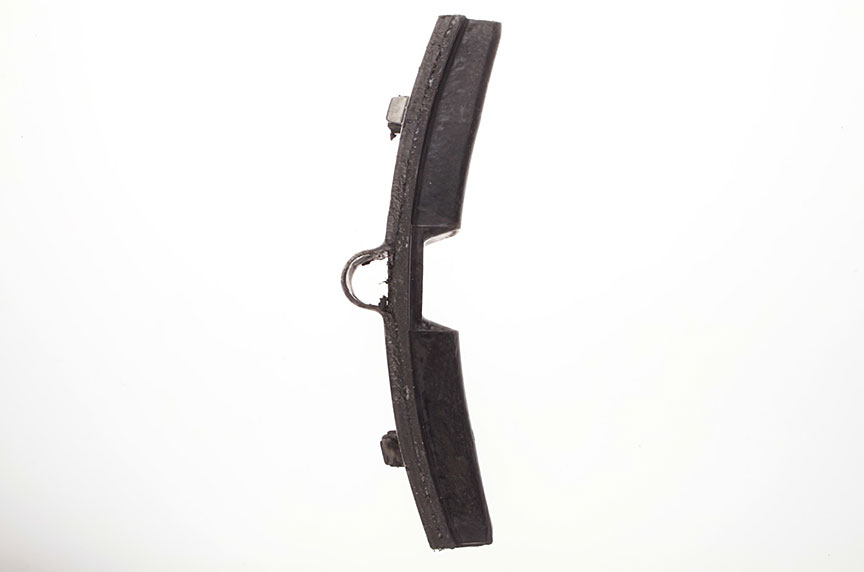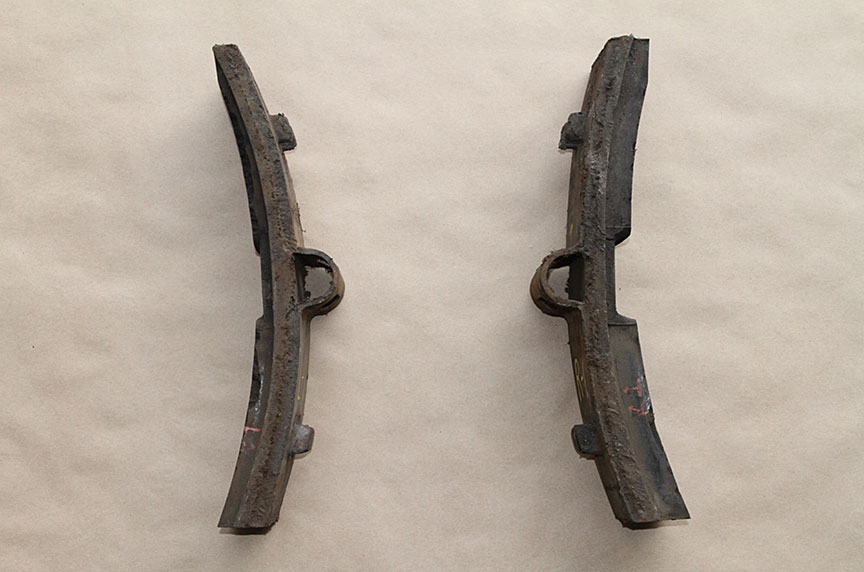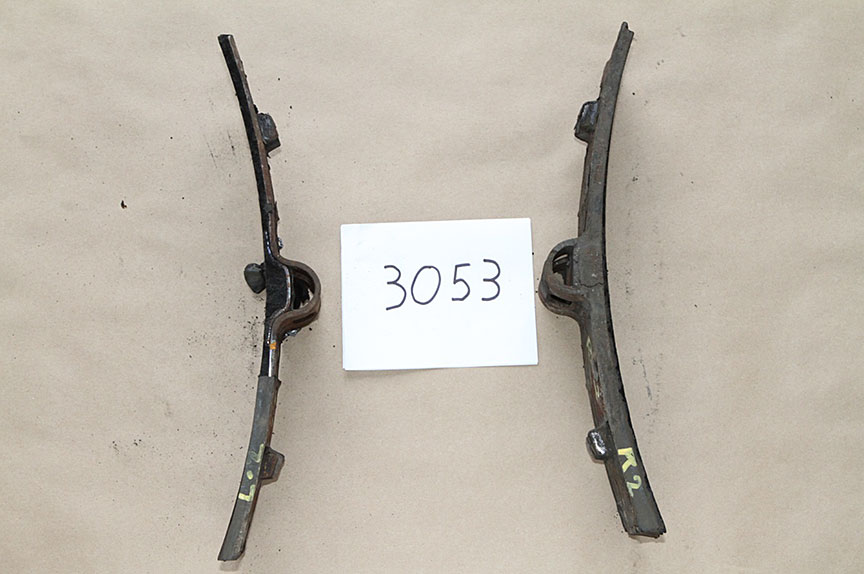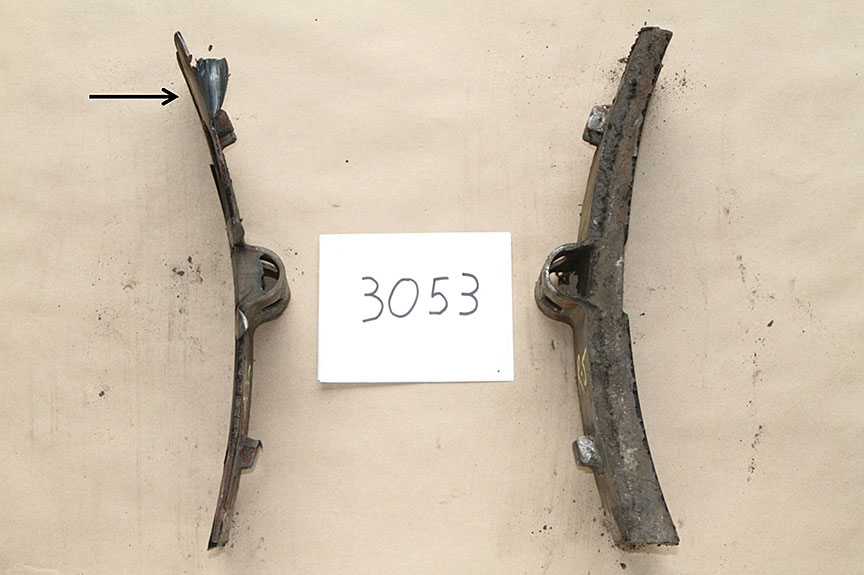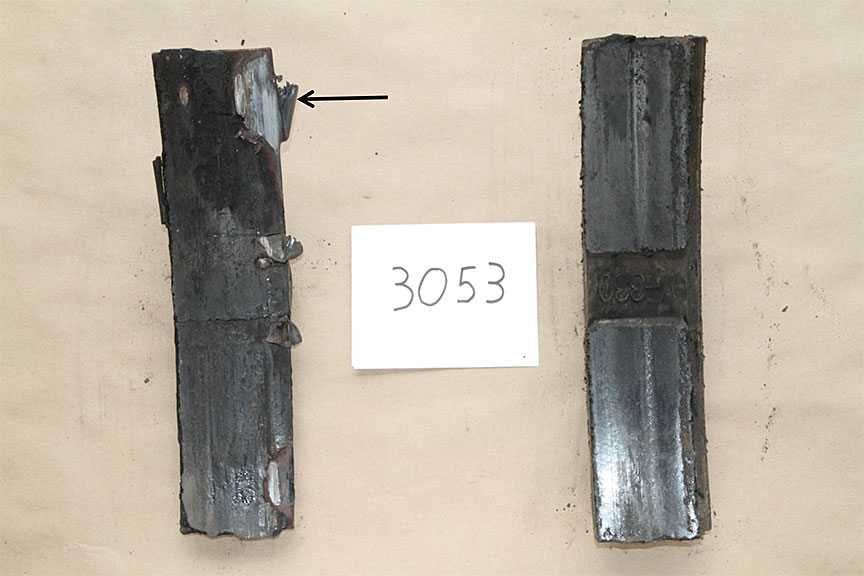Table of contents
1.0 Introduction
1.1 Description of occurrence
1.1.1
On 05 July 2013, at about 2250 Eastern Daylight Time, Montreal, Maine & Atlantic Railway (MMA) freight train MMA-002 (the train), en route from Montréal, Quebec, to Saint John, New Brunswick, was stopped at Nantes, Quebec (Mile 7.40 of the Sherbrooke Subdivision), the designated MMA crew change point. At about 2350, a local resident reported a fire on the lead locomotive (MMA 5017) to the 911 emergency call center. Subsequently the local fire department responded along with another MMA employee. Emergency shutdown procedures were initiated on the lead locomotive and the fire was extinguished. The train, consisting of 5 head-end locomotives, 1 VB car (special purpose caboose), 1 box car, and 72 Class 111 tank cars carrying flammable liquids (petroleum crude oil, UN 1267, Class 3), was then secured on the main track on a descending grade.
1.1.2
Shortly before 0100 on 06 July 2013, the train started to move and gathered speed as it rolled uncontrolled down the descending grade into the town of Lac-Mégantic, Quebec, 7.4 miles southeast of Nantes. While travelling at well in excess of the authorized speed, the train derailed near the centre of Lac-Mégantic. Numerous tank cars ruptured and a fire ensued.
1.2 Engineering services requested
1.2.1
The Transportation Safety Board of Canada (TSB) Eastern Regional Operations – Rail/Pipeline requested that the TSB Engineering Laboratory conduct an examination of the locomotives’ and VB car’s wheels and brake shoes.
1.3 Background
1.3.1
The locomotive consist included 5 locomotives and a VB car which was a caboose converted to act as a remote control unit. The handbrakes on the subject six-axle locomotives only engage the brake shoes on 2 of the 12 wheels. Handbrakes on the VB and tank cars in this train engage the brake shoes all 8 wheels. Those wheels equipped with handbrakes are indicated with “HB” in the column under Hand Brake in Appendix A.
1.3.2
Table 1 below lists the unit numbers and details of the locomotive consist:
| Unit | Type | Axles | Cab direction | Lead axle | Wheels with handbrake |
|---|---|---|---|---|---|
| MMA 5017 | C30-7 | 6 | Forward | L1/R1 | R2/R3 |
| VB Car | Caboose | 4 | N/A | R1/L1 | All |
| MMA 5026 | C30-7 | 6 | Aft | R6/L6 | R2/R3 |
| CITX 3053 | SD40-2 | 6 | Forward | L1/R1 | L2/L3 |
| MMA 5023 | C30-7 | 6 | Forward | L1/R1 | R2/R3 |
| CEFX 3166 | SD40-2 | 6 | Aft | R6/L6 | L2/L3 |
2.0 Examination
2.1 Wheel rims and treads
2.1.1
All 68 wheels were examined for rim thickness and tread surface discolouration. Rim thickness was measured using an AAR wheel rim thickness gauge. All of the VB car wheels exceeded the specified ¾ inch minimum rim thickness for 33-inch freight wheels.Footnote 1 All of the locomotive wheels were above the 1 inch minimum rim thickness for locomotive wheels in road service.Footnote 2 The results are recorded in 16ths of an inch under the columns titled Wheel Rim in Appendix A.
2.1.2
Blueing is a blue discolouration of steel surfaces that is indicative of exposure to heat. On railway wheels, tread blueing is caused by the frictional heat generated during a heavy or extended brake application. A qualitative scale was used to characterize the amount of blueing observed on the wheel tread: no blueing = 0, ¼ of the wheel tread = 0.25, ½ of the wheel tread = 0.5, ¾ of the wheel tread = 0.75 and full tread blueing including the flange = 1. Figures 1 through 4 show representative examples of the different amounts of blueing observed. The results are recorded under the columns titled Tread Blueing in Appendix A.
2.2 Brake shoe thickness
2.2.1
The brake shoes for all 68 wheels were removed and their thickness measured. Given that there are various manufacturers of brake shoes, the following dimensions were assumed for a representative new (unworn) brake shoe: backing plate thickness of approximately 4 mm and lining material thickness of approximately 46 mm for an overall thickness of approximately 50 mm (Figure 5). The extent of wear measured on the subject brake shoes was compared to the specified minimum for brake shoe thickness. The condemning limit for combined backing plate and lining thickness is 9.5mm (3/8 inch).Footnote 3 Removing the backing plate thickness of 4 mm leaves a condemnable brake shoe lining thickness of 5.5 mm. Due to normal variations in wheel/brake head alignment and wheel tread taper, all of the shoes exhibited asymmetrical wear (Figures 6 and 7). Therefore the thickness of the lining was measured inboard and outboard at both the top and the bottom of the shoe. The inboard and outboard lining thicknesses at the top and the bottom were then averaged to identify those shoes with less than 5.5 mm (the condemning limit) remaining across the face of the lining. Some of the brake shoes were worn to the backing plate (Figures 8, 9 and 10) and therefore a thickness of 0 was given for that area of the lining. Note that the original condition of the brake shoe linings before the occurrence was not known; therefore, the extent of brake shoe thickness loss due to the occurrence is not known. The results are recorded in mm under the columns titled Brake Shoe Lining Thickness Average in Appendix A.
3.0 Analysis
3.1
When the independent air brake is applied, all of the wheels on a locomotive generate approximately the same retarding brake force. All of the VB car wheels also generate approximately the same retarding brake force, albeit a smaller force than the locomotive wheels due to the difference in brake equipment size. When the handbrakes are applied in addition to the independent air brake, wheels that receive both air and handbrake pressure should generate a greater retarding force due to the summation of the air brake force and the mechanical handbrake force. In the present case, it is considered that the air pressure in the independent brake started to leak off while the train was stopped in Nantes. This likely caused the wheels closest to the leaks to lose their retarding force first. Once the train began to move, the wheels with the greatest remaining retarding force would have generated the greatest heat due to brake shoe friction. Consequently, these wheels should show the greatest extent of wheel tread blueing.
3.2
A review of the data shows that 13 of the 68 wheels (19%) had blueing across the entire tread width (blueing =1) (Appendix A, red shaded cells). This includes 3 of the 18 wheels (16 %) equipped with handbrakes. Grouping all wheels with blueing of ¾ or full tread width (blueing = 0.75 to 1.0) represents 46 of the 68 wheels (67%). This grouping includes 11 of the 18 wheels (61%) equipped with handbrakes (Appendix A, red and yellow shaded cells). It is considered that had the handbrakes been applied securely, all 18 wheels equipped with a handbrake would have been fully blued. The fact that 7 of the 18 wheels acted upon by a handbrake had 0.5 or less tread blueing suggests that several of the handbrakes were not applied securely. These observations also suggest that the independent brake was providing most of the retarding force to hold the locomotive on the grade, not the handbrakes.
3.3
The data indicates that 9 of the 68 brake shoes (13%) had a lining thickness of 5.5 mm or less (Appendix A, grey shaded cells). Only 2 of these (11%) were at one of the wheel locations equipped with a handbrake. Had the handbrakes on the subject locomotives all been securely applied, it would be expected that the brake shoe lining wear would have been greatest at wheels acted upon by a handbrake.
3.4
The data shows that MMA 5026 and CITX 3053, the second and third units, had the highest number of wheels with full blueing across the entire tread including the flange. The 9 brake shoes worn beyond the 5.5 mm limit were under these same 2 units. Combining the brake shoe wear results with the tread blueing results reveals that the third unit, CITX 3053, generated the greatest retarding force.
4.0 Conclusions
4.1
All of the locomotive and car wheels exceeded the applicable minimum allowable rim thicknesses.
4.2
The original condition of the brake shoe linings before the occurrence was not known. Therefore the extent of brake shoe thickness loss due to the runaway is not known.
4.3
Some of the brake shoes had worn through the lining to the backing plate.
4.4
The overall pattern of wheel blueing and brake shoe lining wear suggests that the independent brakes were providing most of the retarding force for this train.
4.5
Few of the wheels equipped with a handbrake showed full tread blueing or excessive brake shoe lining wear. This suggests that several of the handbrakes were not applied securely.
Appendix A - Wheel and brake shoe examination results
Wheel and brake shoe examination results
| ID Number |
Axle Number |
Wheel Position |
Hand Brake |
Tread Blueing |
Brake shoe lining thickness | Wheel Rim |
Wheel Position |
Hand Brake |
Tread Blueing |
Brake shoe lining thickness | Wheel Rim |
||||||||||
|---|---|---|---|---|---|---|---|---|---|---|---|---|---|---|---|---|---|---|---|---|---|
| T/out | T/in | Avg. | B/out | B/in | Avg. | T/out | T/in | Avg. | B/out | B/in | Avg. | ||||||||||
| MMA | 1 | L1 | 0.25 | 7 | 14 | 10.5 | 11 | 19 | 15 | 40 | R1 | 0.75 | 20 | 23 | 21.5 | 22 | 25 | 23.5 | 41 | ||
| 5017 | 2 | L2 | 0.25 | 9 | 14 | 11.5 | 16 | 21 | 18.5 | 46 | R2 | HB | 0.5 | 21 | 23 | 22 | 19 | 23 | 21 | 48 | |
| C30-7 | 3 | L3 | 0.25 | 29 | 26 | 27.5 | 32 | 29 | 30.5 | 44 | R3 | HB | 0.75 | 15 | 21 | 18 | 24 | 28 | 26 | 45 | |
| 4 | L4 | 0.25 | 20 | 25 | 22.5 | 25 | 29 | 27 | 46 | R4 | 0.75 | 18 | 25 | 21.5 | 24 | 28 | 26 | 45 | |||
| 5 | L5 | 0.5 | 17 | 20 | 18.5 | 23 | 26 | 24.5 | 35 | R5 | 0.75 | 24 | 26 | 25 | 24 | 28 | 26 | 35 | |||
| 6 | L6 | 0.5 | 21 | 24 | 22.5 | 26 | 30 | 28 | 34 | R6 | 1 | 8 | 8 | 8 | 21 | 20 | 20.5 | 33 | |||
| MMA | 7 | R1 | HB | 0 | 17 | 17 | 17 | 22 | 22 | 22 | 34 | L1 | HB | 0.5 | 10 | 11 | 10.5 | 27 | 27 | 27 | 34 |
| VB-1 | 8 | R2 | HB | 0.25 | 9 | 9 | 9 | 22 | 21 | 21.5 | 32 | L2 | HB | 0.5 | 9 | 9 | 9 | 26 | 25 | 25.5 | 33 |
| Caboose | 9 | R3 | HB | 0.25 | 16 | 20 | 18 | 23 | 25 | 24 | 14 | L3 | HB | 0.75 | 14 | 18 | 16 | 22 | 22 | 22 | 14 |
| 10 | R4 | HB | 0.25 | 16 | 14 | 15 | 22 | 21 | 21.5 | 37 | L4 | HB | 0.75 | 15 | 15 | 15 | 22 | 23 | 22.5 | 37 | |
| MMA | 11 | R6 | 1 | 11 | 14 | 12.5 | 12 | 16 | 14 | 39 | L6 | 0.75 | 21 | 28 | 24.5 | 19 | 25 | 22 | 39 | ||
| 5026 | 12 | R5 | 1 | 5 | 15 | 10 | 16 | 26 | 21 | 38 | L5 | 0.75 | 6 | 14 | 10 | 20 | 25 | 22.5 | 37 | ||
| C30-7 | 13 | R4 | 0.75 | 18 | 17 | 17.5 | 26 | 28 | 27 | 42 | L4 | 1 | 14 | 20 | 17 | 24 | 30 | 27 | 42 | ||
| 14 | R3 | HB | 1 | 7 | 11 | 9 | 13 | 15 | 14 | 40 | L3 | 0.75 | 1 | 3 | 2 | 18 | 14 | 16 | 39 | ||
| 15 | R2 | HB | 0.75 | 5 | 13 | 9 | 20 | 25 | 22.5 | 38 | L2 | 0.75 | 7 | 13 | 10 | 23 | 28 | 25.5 | 38 | ||
| 16 | R1 | 0.75 | 8 | 10 | 9 | 17 | 19 | 18 | 24 | L1 | 1 | 2 | 3 | 2.5 | 25 | 30 | 27.5 | 24 | |||
| CITX | 17 | L1 | 0.75 | 26 | 21 | 23.5 | 26 | 21 | 23.5 | 37 | R1 | 0.75 | 17 | 14 | 15.5 | 17 | 15 | 16 | 37 | ||
| 3053 | 18 | L2 | HB | 1 | 6 | 0 | 3 | 3 | 0 | 1.5 | 39 | R2 | 1 | 0 | 0 | 0 | 5 | 1 | 3 | 38 | |
| SD40-2 | 19 | L3 | HB | 0.75 | 0 | 0 | 0 | 13 | 11 | 12 | 42 | R3 | 0.75 | 9 | 15 | 12 | 18 | 23 | 20.5 | 41 | |
| 20 | L4 | 0.75 | 13 | 12 | 12.5 | 9 | 8 | 8.5 | 43 | R4 | 0.75 | 6 | 3 | 4.5 | 15 | 9 | 12 | 43 | |||
| 21 | L5 | 0.75 | 0 | 0 | 0 | 1 | 0 | 0.5 | 45 | R5 | 0.75 | 8 | 10 | 9 | 18 | 20 | 19 | 45 | |||
| 22 | L6 | 1 | 1 | 0 | 0.5 | 9 | 0 | 4.5 | 42 | R6 | 1 | 8 | 1 | 4.5 | 10 | 1 | 5.5 | 42 | |||
| MMA | 23 | L1 | 1 | 27 | 32 | 29.5 | 27 | 32 | 29.5 | 19 | R1 | 1 | 24 | 28 | 26 | 19 | 22 | 20.5 | 18 | ||
| 5023 | 24 | L2 | 0.75 | 23 | 28 | 25.5 | 24 | 28 | 26 | 28 | R2 | HB | 0.75 | 21 | 28 | 24.5 | 21 | 31 | 26 | 28 | |
| C30-7 | 25 | L3 | 0.75 | 5 | 10 | 7.5 | 22 | 25 | 23.5 | 43 | R3 | HB | 1 | 17 | 18 | 17.5 | 25 | 24 | 24.5 | 42 | |
| 26 | L4 | 0.75 | 16 | 18 | 17 | 25 | 25 | 25 | 32 | R4 | 0.75 | 11 | 13 | 12 | 23 | 23 | 23 | 31 | |||
| 27 | L5 | 0.75 | 13 | 15 | 14 | 22 | 22 | 22 | 36 | R5 | 0.25 | 29 | 23 | 26 | 29 | 25 | 27 | 37 | |||
| 28 | L6 | 0.75 | 22 | 25 | 23.5 | 26 | 27 | 26.5 | 33 | R6 | 0.5 | 25 | 31 | 28 | 29 | 36 | 32.5 | 32 | |||
| CEFX | 29 | R6 | 0.5 | 19 | 13 | 16 | 20 | 15 | 17.5 | 37 | L6 | 0.5 | 23 | 16 | 19.5 | 22 | 16 | 19 | 36 | ||
| 3166 | 30 | R5 | 0.5 | 20 | 16 | 18 | 22 | 18 | 20 | 36 | L5 | 0.75 | 19 | 16 | 17.5 | 20 | 18 | 19 | 36 | ||
| SD40-2 | 31 | R4 | 0.5 | 16 | 11 | 13.5 | 20 | 13 | 16.5 | 37 | L4 | 0.75 | 12 | 8 | 10 | 23 | 20 | 21.5 | 38 | ||
| 32 | R3 | 0.5 | 20 | 20 | 20 | 25 | 24 | 24.5 | 39 | L3 | HB | 0.75 | 18 | 10 | 14 | 24 | 16 | 20 | 39 | ||
| 33 | R2 | 0.5 | 19 | 12 | 15.5 | 16 | 10 | 13 | 36 | L2 | HB | 0.75 | 17 | 13 | 15 | 21 | 18 | 19.5 | 36 | ||
| 34 | R1 | 0.5 | 28 | 28 | 28 | 30 | 30 | 30 | 36 | L1 | 0.75 | 15 | 7 | 11 | 24 | 18 | 21 | 36 | |||
This lab report is part of the Transportation Safety Board of Canada's investigation report R13D0054.
